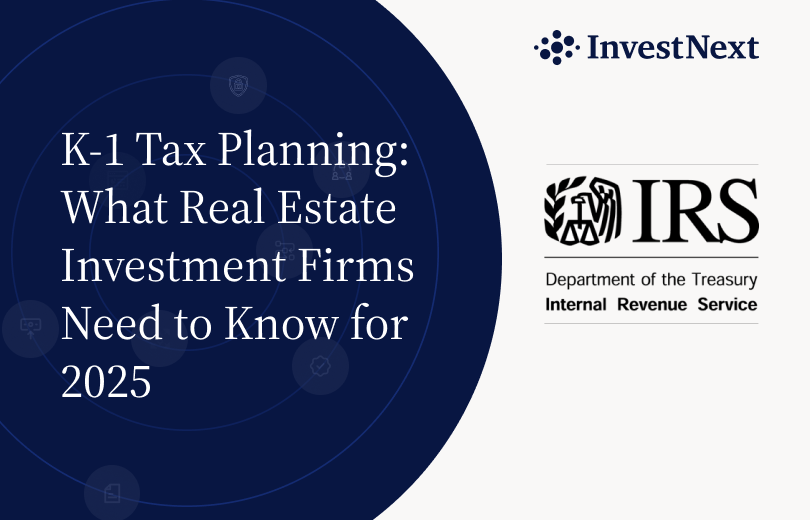Real estate investing is a complex field with numerous strategies and guidelines that investors use to determine a property’s potential profitability. One popular guideline that has gained significant attention in recent years is the “1 percent rule.” This rule is a simple formula that real estate investors use to evaluate a rental property’s viability.
So, what is the 1 percent rule in real estate investing? The rule states that the monthly rent of a property should be at least 1% of its purchase price. For example, if a property is purchased for $200,000, the monthly rent should ideally be $2,000 or more.
The 1 percent rule is a useful tool for investors to assess a property’s potential cash flow quickly and effortlessly. It allows them to evaluate the property’s potential rental income against its purchase price. However, it’s crucial to understand the rule’s origins, its applicability, and the nuances surrounding its implementation.
Now, we’ll explore the context of this rule, and its relevance in today’s real estate market. This will provide a better understanding of the rule’s benefits and limitations and help investors make informed decisions.

Historical Context and Origin of the 1 Percent Rule in Real Estate Investing
The “1% rule” has become a staple in the lexicon of real estate investors, but where did it originate, and what historical factors contributed to its adoption?
- Origins: The 1% rule emerged as a quick and straightforward tool for investors to gauge the potential profitability of a property. By ensuring that the monthly rent from a property would be at least 1% of its purchase price, investors could quickly determine if a property was worth further consideration.
- Economic Factors: Over the decades, as real estate markets fluctuated, the 1% rule served as a constant amidst changing interest rates, inflation rates, and market dynamics. It provided a buffer against economic downturns, ensuring that properties selected using this rule had a higher likelihood of remaining profitable.
- Adoption by Investment Communities: As real estate investment strategies evolved, communities of investors began to adopt and promote the 1% rule. It became a shared standard, especially among those who prioritized rental income over other forms of real estate returns.
- Research and Validation: Studies and analyses over the years have both supported and critiqued the 1% rule. One such research article from Oxford Academic highlights the importance of historical rental income growth rates in analyzing long-term real estate returns. This research underscores the significance of the 1% rule as a foundational metric in real estate investing.
Accuracy and Relevance of the 1 Percent Rule in Today’s Market
The 1 percent rule is a guideline used by real estate investors to determine if the monthly rent earned from a property will exceed its monthly mortgage payment. The primary objective of this rule is to ensure that the rent will be greater than or equal to the mortgage payment, allowing the investor to at least break even on the property. But how accurate and relevant is this rule in today’s dynamic real estate market?
- Understanding the Rule: The 1 percent rule is a simple calculation where the purchase price of the property, along with any necessary repairs, is multiplied by 1%. This gives a base level of monthly rent. For instance, for a property with a total value of $200,000, the rule suggests a $2,000 monthly rent payment.
- Benefits:
- Quick Analysis: It provides a quick estimation tool for investors, allowing them to gauge the potential profitability of a property.
- Risk Assessment: By ensuring the rent covers the mortgage payment, investors can mitigate the risk of negative cash flow.
- Limitations:
- Over-simplification: The rule doesn’t account for other significant costs associated with property ownership, such as maintenance, insurance, and taxes.
- Market Variability: Rental rates can vary based on location, property condition, and market demand. Relying solely on the 1% rule might not be reflective of the actual market conditions.
- Comparative Tools: While the 1 percent rule offers a baseline, other calculations like the gross rent multiplier and the 70% rule can provide more comprehensive insights. For instance, the gross rent multiplier divides the total borrowed value by the monthly rent, giving an estimate of the time required to pay off the investment.

Common Misconceptions and Pitfalls to Avoid When Using the 1 Percent Rule
The concept of “what is the 1 percent rule in real estate investing” often comes up among industry professionals. The reason is that it has been a cornerstone for many real estate investors, offering a quick metric to gauge the potential profitability of a property. However, like many rules of thumb, it’s not without its misconceptions and pitfalls. Understanding these can help investors make more informed decisions and avoid common mistakes.
- Misconception: One-Size-Fits-All: One of the most prevalent misconceptions is that the 1 percent rule is a one-size-fits-all solution. While it provides a general guideline, it’s essential to understand that real estate markets vary significantly across regions, cities, and even neighborhoods.
- Pitfall: Ignoring Other Costs: The 1 percent rule focuses on gross rental income relative to the property’s purchase price. It doesn’t account for other significant costs, such as:
- Property maintenance
- Insurance premiums
- Property taxes
- Management fees
- Misconception: Guaranteed Profitability: Meeting the 1 percent rule doesn’t guarantee profitability. It’s a preliminary screening tool, and properties that meet this rule can still result in negative cash flow if not managed correctly.
- Pitfall: Over-reliance: Solely relying on the 1 percent rule without considering other factors can lead to poor investment decisions. It’s crucial to conduct a comprehensive analysis, considering market trends, property condition, and future growth potential.
- Misconception: Applicable to All Property Types: The rule might not be as effective for high-end luxury properties or properties in areas with exceptionally high property taxes or insurance costs.
Enhancing the Application of the 1 Percent Rule with Real Estate Investment Management Platforms
As the real estate market evolves, the need for advanced tools and strategies becomes paramount. Enter real estate investment management platforms, a game-changer in the industry.
Real estate investment management platforms offer a streamlined solution for investors to manage their property portfolios. These platforms provide on-demand tools and templates that allow investors to instantly access financial data, performance reports, and market insights. This efficiency not only reduces the time spent on manual tasks but also offers a comprehensive view of an investor’s assets, ensuring that they are always in line with the 1 percent rule.
One of the primary benefits of these platforms is their ability to provide real-time reporting. Investors can receive instant news and updates about their properties, ensuring that they stay ahead of market trends and make informed decisions. Additionally, the platforms come equipped with models and strategies tailored for real estate, ensuring that investors can maximize their profits while adhering to the 1 percent rule.
Furthermore, the integration of these platforms into the business operations of real estate investors has led to significant growth in their portfolios. The advanced solutions offered by these platforms enable investors to manage their assets more effectively, leading to increased profitability and adherence to the 1 percent rule.
FAQs:
- What is an investment management platform?
- An investment management platform is a digital tool that offers solutions for managing and tracking investments, providing real-time data, insights, and strategies.
- What is real estate investment management?
- Real estate investment management refers to the process of managing and optimizing a real estate portfolio to achieve maximum profitability and growth.
- Who is the best fund manager in real estate?
- The best fund manager in real estate varies based on region, expertise, and track record. It’s essential to research and find a manager that aligns with your investment goals.
- What software do you need to run a real estate investment firm?
- Running a real estate investment firm requires software that can handle portfolio management, accounting, reporting, and market analysis.
The Future of the 1% Rule in Real Estate Investing
When discussing “what is the 1 percent rule in real estate investing”, it’s essential to consider the current landscape. Recent market dynamics, technological advancements, and shifts in investor behavior are challenging the long-standing relevance of this rule. While the 1% rule has served as a reliable guide for many, its future applicability may be influenced by several key factors.
Market Dynamics and the 1% Rule
The real estate market is influenced by a myriad of factors, including economic conditions, interest rates, and regional developments. As these factors change, the returns that investors can expect from their investments also evolve. For instance, in areas experiencing massive urbanization or tech booms, property values might increase at a rate where the 1% rule no longer applies. Conversely, in regions facing economic downturns, investors might find properties that exceed the 1% rule’s criteria, offering even higher potential returns.
Technological Advancements
The rise of real estate technology platforms and tools has made property analysis more sophisticated. Investors now have access to detailed data and analytics that can provide insights beyond the simple calculations of the 1% rule. With these tools, investors can make more informed decisions, considering factors like projected rental income growth, neighborhood development plans, and long-term property appreciation.
Shifts in Investor Behavior
Modern investors are increasingly looking at real estate as part of a diversified portfolio. This shift means that some investors might prioritize long-term appreciation over immediate monthly rental returns. For these investors, the 1% rule might be less relevant as they focus on other indicators of potential profitability.
The Evolving Role of the 1% Rule in Real Estate Investing
The 1% rule has been a cornerstone in the world of real estate investing for decades. It offers a quick and straightforward method for investors to gauge the potential profitability of a rental property. However, as the real estate landscape shifts and evolves, so does the role and relevance of the 1% rule. This evolution is driven by various factors, from market dynamics to technological advancements and changing investor preferences.
Market Dynamics Impacting the 1% Rule
The real estate market is in a constant state of flux, influenced by global economic conditions, regional developments, and local factors. These dynamics can impact property values, rental rates, and investor expectations:
- Economic Conditions: Economic booms can lead to increased property values, making it challenging for properties to meet the 1% rule. Conversely, economic downturns might present opportunities where properties exceed the 1% criteria.
- Regional Developments: Areas undergoing rapid urbanization or technological growth can see property values skyrocket, potentially rendering the 1% rule less applicable.
Technological Advancements and the 1% Rule
With the rise of real estate tech platforms, investors now have access to a wealth of data and analytics. These tools offer insights beyond the 1% rule, allowing for more nuanced property analysis. For instance, investors can now factor in projected rental income growth, future neighborhood developments, and long-term property appreciation potential.
Changing Investor Preferences
The modern real estate investor’s profile is evolving. Many are now looking at real estate as a component of a diversified investment portfolio. This shift means that immediate monthly rental returns might be secondary to long-term property appreciation for some investors. In such cases, the 1% rule might take a backseat to other investment metrics.

Conclusion on the 1% Rule in Real Estate Investing
The 1% rule has been a staple in the toolkit of real estate investors for years, providing a quick and efficient way to gauge the potential profitability of rental properties. But as with any investment strategy, it’s essential to understand its origins, applications, and limitations.
The 1% rule is a guideline suggesting that the monthly rent earned from a piece of investment property should exceed or at least equal the property’s monthly mortgage payment. This ensures that the investor breaks even or makes a profit. While this rule offers a straightforward approach, it’s crucial to remember that it’s just one of many tools available to investors.
As we look to the future, the 1% rule will undoubtedly continue to be a part of the real estate investor’s arsenal. However, its application and significance will be shaped by the broader trends and changes in the real estate market. Investors should remain vigilant, stay informed, and be ready to adapt their strategies as the world of real estate investing continues to transform.







